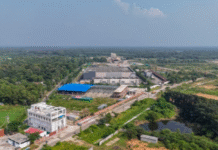The last ten years saw an accelerated growth of economic units on the back of rapid expansion of the service sector, the preliminary report of Economic Census 2013 revealed yesterday.
An economic unit is any player that contributes to the country’s gross domestic product, starting from rickshaw-pullers to large garment factories. Agriculture has been excluded from the survey as the statistical agency conducts a separate census for it.
Conducted by the Bangladesh Bureau of Statistics between March 31 and May 31 this year, the survey found the number of economic units to be 80.75 lakh, up 118 percent from the previous edition of the survey published in 2003.
The total number of economic units in 2003 was 37.08 lakh, an increase of 71 percent from 1986, when the first edition of the survey came out.
The purpose of the study is to investigate the nature of structural change that has occurred in the economy over the last decade and to provide comprehensive statistical information for economic and social development planning as well as policy making.
For the survey, a complete list of all establishments and households of the country was prepared. But only economic units, except agriculture, were separated from the list and enumerated in the census.
The survey covered temporary and permanent establishments and economic households.
The study defined temporary establishment as an economic unit organised in a temporary structure and permanent establishment as having fixed location and permanent structure.
Households with non-agricultural economic activities such as cottage industry, shop or workshop are defined as economic households.
The data released at an event attended by Planning Minister AK Khandker and Finance Minister AMA Muhith shows that 72 percent of the total economic units are in rural areas, compared with 62 percent in the earlier edition.
The remaining 28 percent of the economic units are in the urban areas.
Particularly encouraging were the figures from the once poverty-prone Rangpur division, which has experienced substantial growth at micro-level economic activities over the past decade.
The total number of economic units in this division in 2013 was 10.88 lakh, up significantly from 4.06 lakh in 2003 survey.
At the division level, large variation still exists in economic activities. The highest number of economic units was in Dhaka, of 25.99 lakh, followed by Chittagong 13.85 lakh, Rajshahi 12.18 lakh, Rangpur 10.88 lakh, Khulna 10.35 lakh, Barisal 3.85 lakh and Sylhet 3.66 lakh.
The study found that permanent establishments in Bangladesh have been increasing over the past decade. The number was 15.62 lakh in 1986, which rose to 29.91 lakh in 2003 and 45.34 lakh in 2013, meaning growth over the last ten years is higher than that occurred over the preceding 17 years.
“It implies that Bangladeshi economy is getting sustainable and moving towards formalisation,” the preliminary report said.
As for household-based economic activities, the findings of Economic Census 2013 reveal that they have expanded “tremendously” during the study period. The number of economic households is 30.39 lakh in 2013, which was 3.81 lakh in 2003 and 5.45 lakh in 1986.
Meanwhile, the service sector activities like wholesale and retail trade including pair of motor vehicles and motorcycles occupy the highest share of 45.91 percent, followed by transportation and storage 13.65 percent, manufacturing 11.76 percent and other service activities 8.48 percent.
Muhith said the substantial progress achieved by the economy in the last one decade is in line with the potential of the country.
He however expressed dissatisfaction as the share of the manufacturing sector to the gross domestic product has not increased in recent years to live up to the expectations.
“We have to heed special attention to it,” said the minister.
Zaid Bakht, research director of Bangladesh Institute of Development Studies (BIDS), told The Daily Star that the increase in the number of economic units means that employment has gone up, but to know the exact number of increase one will have to wait till the full report is published.
He said the value addition of non-farm activities in the economy is more, adding that the continuous growth was possible due to its rise.
The BIDS research director, however, said it was very surprising that non-farm activities were low in Sylhet, given that most of the remittance flow to the division.
Industries Minister Dilip Barua, Executive Chairman of Board of Investment SA Samad and Prime Minister’s Economic Affairs Adviser Mashiur Rahman also spoke.
Source: The Daily Star










